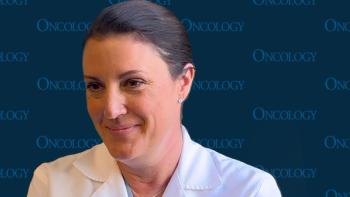
- ONCOLOGY Vol 10 No 12
- Volume 10
- Issue 12
Radiation After Lumpectomy for Node-Negative Breast Cancer Reduces Disease Recurrence But Not Overall Mortality
Although radiation therapy following lumpectomy for lymph node-negative breast cancer significantly reduces both local and distant disease recurrence, overall mortality is not substantially better in women who receive radiation than in those who do not, according to a Canadian study update report in the November 20th Journal of the National Cancer Institute.
Although radiation therapy following lumpectomy for lymph node-negativebreast cancer significantly reduces both local and distant diseaserecurrence, overall mortality is not substantially better in womenwho receive radiation than in those who do not, according to aCanadian study update report in the November 20th Journal of theNational Cancer Institute.
Researchers Roy M. Clark, md, Mark Levine, md, and other membersof the Ontario Clinical Oncology Group add that no subgroup ofpatients was found to have a low enough risk of local diseaserecurrence to suggest that other women with similar disease characteristicsmight safely forego post-lumpectomy radiation therapy.
The authors note that breast-conservation surgery is now commonlyused in the management of early-stage breast cancer, and clinicaltrials have demonstrated that breast irradiation after surgerysubstantially reduces the risk of cancer recurrence in the breast.In this study, 837 women in Ontario diagnosed, from April 1984Through Februrary 1989, with breast cancer that had not spreadto axillary lymph nodes were treated with lumpectomy and werethen randomly assigned to receive radiation therapy to the affectedbreast or no further treatment. None of the women in the studyreceived postsurgical systemic therapy.
Initial results of the study were published in 1992 after a medianfollow-up time of 43 months. At that time, recurrence of cancerin the breast occurred in 5.5% of patients who received breastirradiation compared with 25.7% of those who did not. No differencein survival was detected between the two groups. In addition,a low-risk patient subgroup (ie, less than a 10% chance of localdisease recurrence without radiation therapy) for whom irradiationmight not be necessary could not be identified.
The current report updates findings now that the median patientfollow-up has reached 7.6 years. Eleven percent of the irradiatedpatients have experienced a recurrence of cancer in the breast,as compared with 35% of women not receiving radiotherapy. Womennot receiving radiotherapy had a fourfold greater risk of localrecurrence relative to those receiving the treatment. This differencewas highly statistically significant. Radiation therapy also resultedin a statistically significant decrease in relapse at sites distantfrom the primary tumor. As in the initial data analysis, youngerage (less than 50 years), tumor size (greater than 2 cm), andpoor nuclear grade were found to be important predictors for localbreast relapse.
Also as before, however, there was no statistically significantdifference in overall survival between the two patient groups,and tumor size and tumor grade remained key predictors for mortality.Similarly, no low-risk subgroup could be identified who mightnot require radiation therapy.
The authors acknowledge that the failure of radiation therapyto improve overall survival while reducing local and distant relapse--demonstratedin this and other studies--remains difficult to explain. Possibleexplanations, they suggest, may involve the limited power of individualstudies to date to detect a statistically significant survivaldifference, the possibility that radiotherapy reduces breast cancermortality but increases mortality due to other causes (eg, ischemicheart disease), or that the high metastatic potential of breastcancer prevents any real benefit from radiotherapy on survival.Finally, Clark and coworkers note that, even if a low-risk groupcould be identified, radiation therapy is still likely to be effective.Individual decision-making, they say, will relate to the perceivedvalue of potential benefits (eg, disease-free survival) balancedagainst possible adverse effects (eg, long-term radiotherapy-relatedmorbidity) . Tumor size and nuclear grade, they add, should continueto be used as prognostic markers to guide the use of adjuvantsystemic therapy.
Articles in this issue
about 29 years ago
Study Links Sex Hormones to Childhood Cancerabout 29 years ago
Scientists Confirm Natural Resistance to HIV-1about 29 years ago
Breast Cancer Incidence and Mortality--United States, 1992about 29 years ago
New Study Proves Benefits of Antiseptic-Impregnated Cathetersabout 29 years ago
IOM Undertakes Study of Cancer and MinoritiesNewsletter
Stay up to date on recent advances in the multidisciplinary approach to cancer.


















































































